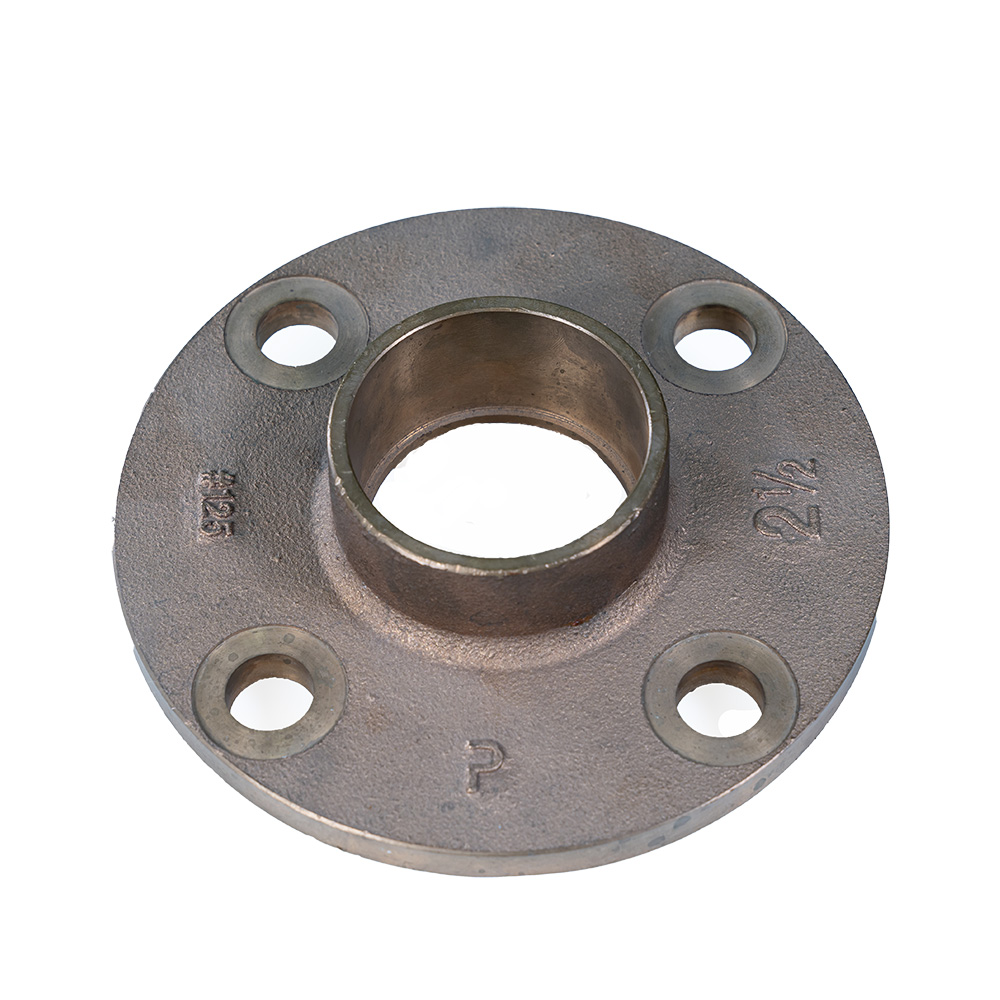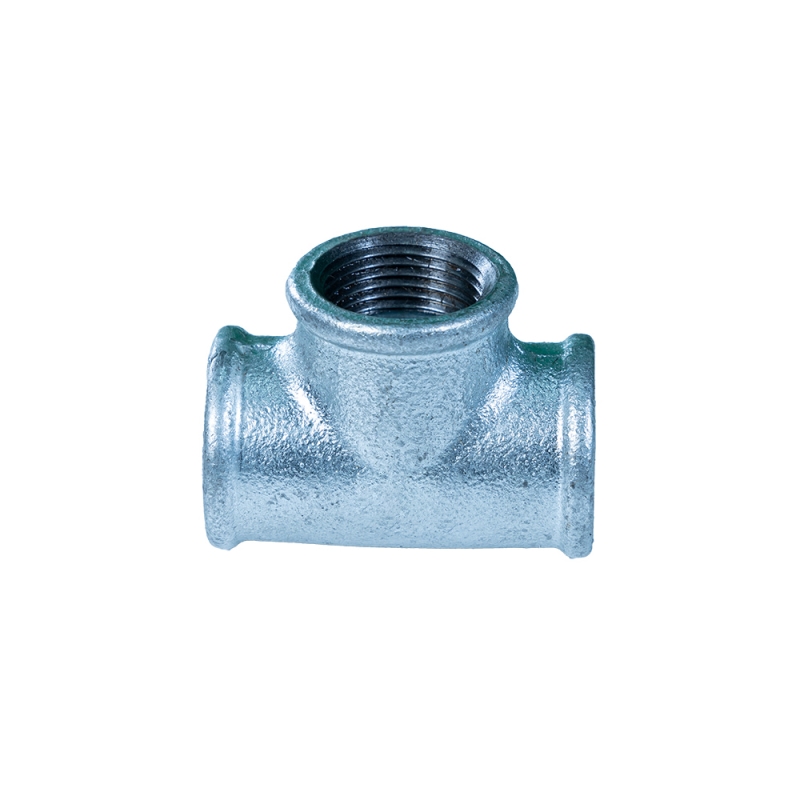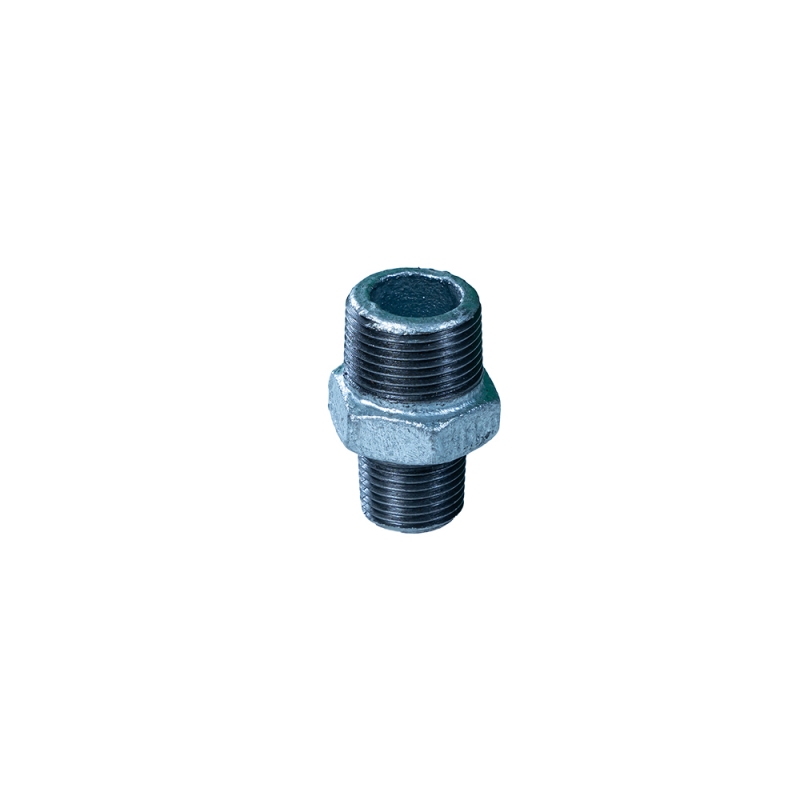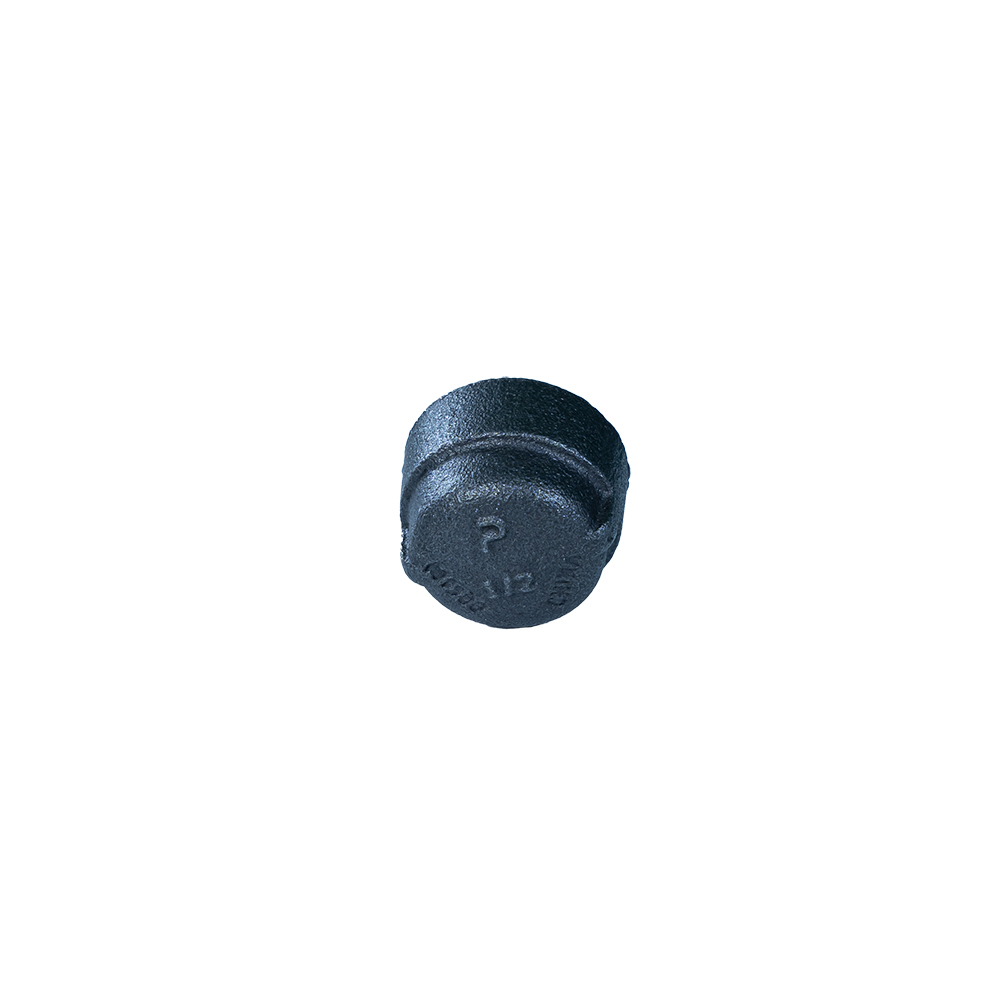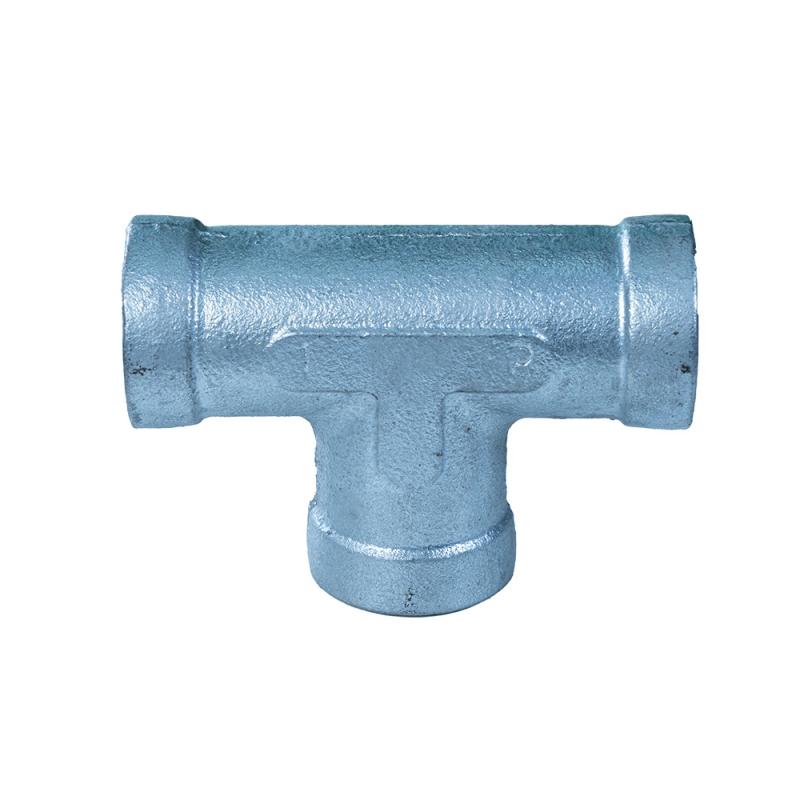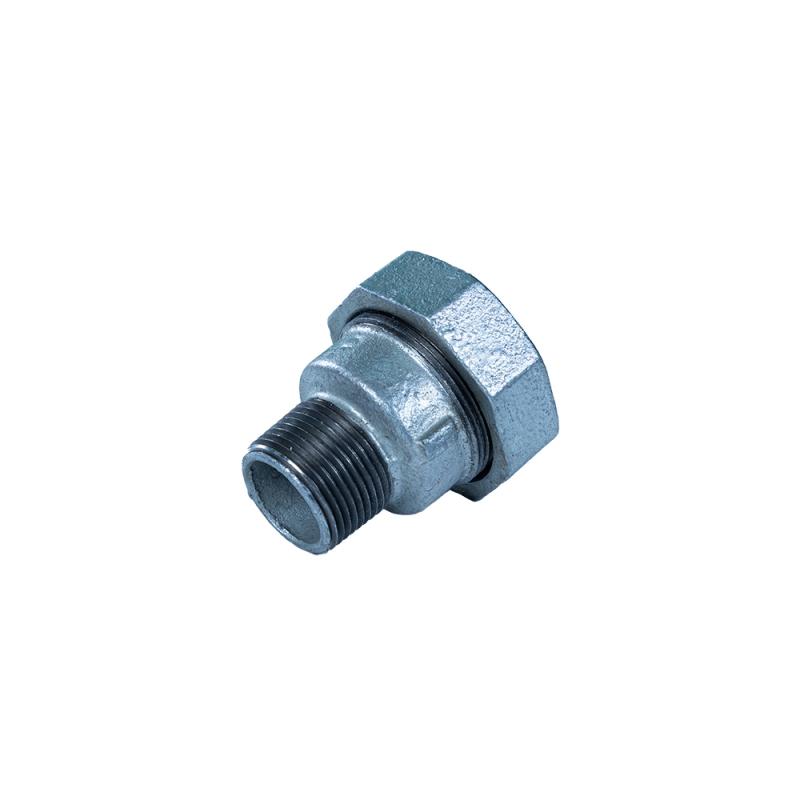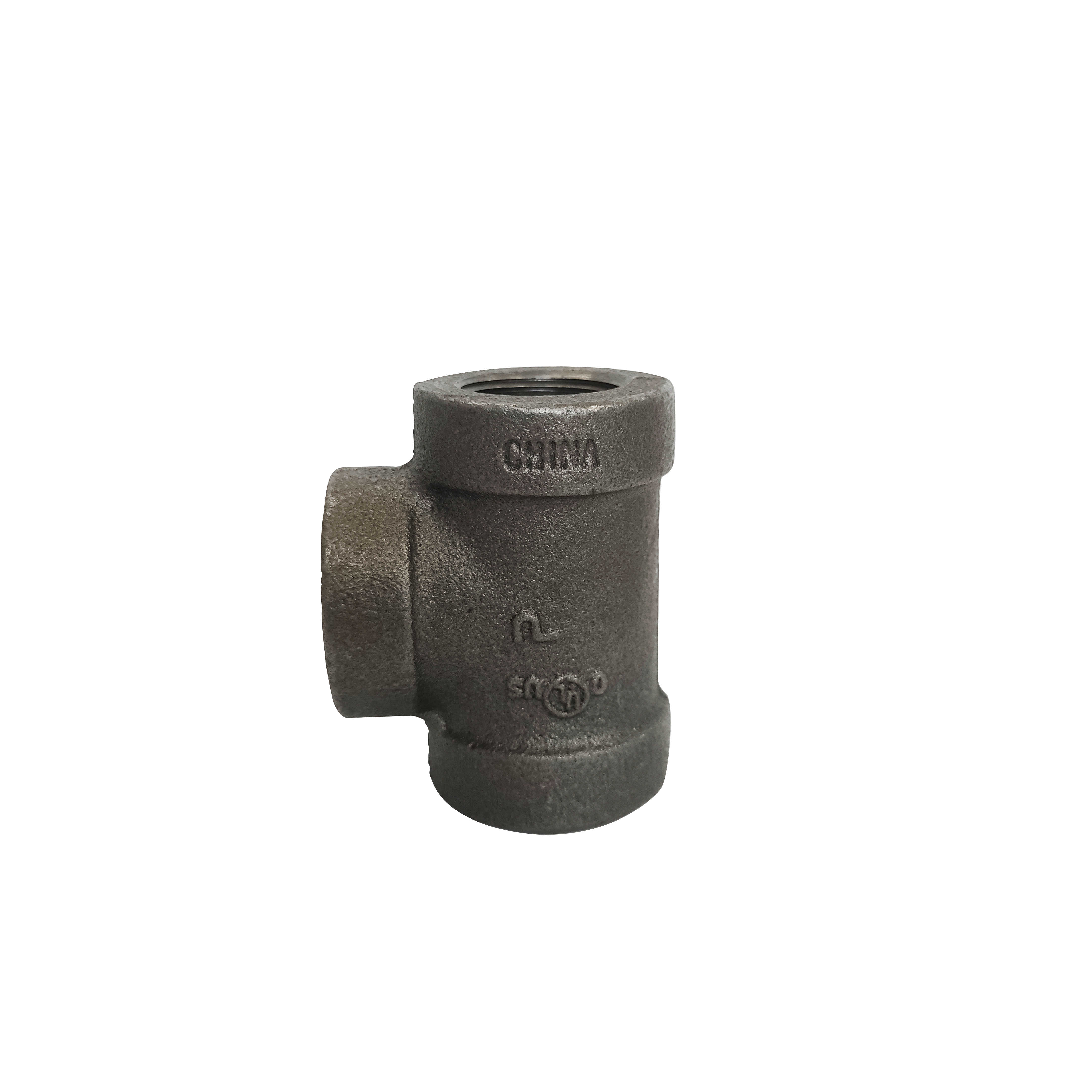In the vast landscape of industrial infrastructure, the unassuming yet critical role of piping systems cannot be overstated. At the heart of many robust and reliable systems are specialized components designed to withstand rigorous conditions. Among these, malleable cast iron fittings stand out for their unique combination of strength, ductility, and cost-effectiveness. This comprehensive guide delves into the world of these essential fittings, exploring their industry significance, technical specifications, diverse applications, and the distinct advantages they offer in modern engineering.
Understanding the Core: Malleable Cast Iron Fittings in Today's Industry
The global demand for reliable fluid conveyance systems continues to grow, driven by urbanization, industrial expansion, and the constant need for efficient resource management. Malleable cast iron fittings are pivotal in this ecosystem, facilitating the safe and effective transport of water, gas, steam, and various industrial fluids. Recent market analyses project a steady growth in the industrial pipe fittings market, with a significant share attributed to cast iron components due to their proven durability and adaptability.
Industry Trends and Their Impact on Malleable Cast Iron Pipe Fittings
Several key trends are shaping the future of industrial fittings. Firstly, the emphasis on sustainable infrastructure projects is leading to a preference for materials with long lifespans and recyclability, where malleable cast iron fittings excel. Secondly, advancements in manufacturing processes, including precision casting and improved annealing techniques, are enhancing the quality and performance of these fittings. Thirdly, the adoption of digital technologies for inventory management and supply chain optimization is streamlining the procurement and delivery of crucial components like malleable cast iron pipe fittings. Finally, stricter regulatory standards for fluid transport systems, particularly in hazardous environments, necessitate the use of highly reliable and compliant fittings, reinforcing the demand for robust materials. The rise of smart cities and industrial automation also drives the need for pipe networks that are not only durable but also capable of integrating with sensing and control technologies.
Exploring Related Components: Malleable Cast Iron Pipe and Malleable Copper Pipe
While our focus is on fittings, it's crucial to understand their context. Malleable cast iron pipe complements these fittings, forming complete, resilient piping networks. These pipes share the excellent mechanical properties of the fittings, including high tensile strength and good elongation, making them resistant to shock and vibration. In contrast, malleable copper pipe offers superior corrosion resistance and thermal conductivity, often preferred in specific applications like potable water systems or HVAC, but it typically comes at a higher cost and may not offer the same robust mechanical strength for high-pressure or heavy-duty industrial applications where malleable cast iron fittings shine.
Product Spotlight: 90° Reducing Elbow NPT 300 Class
Our featured product, the 90° Reducing Elbow NPT 300 Class, exemplifies the precision and utility inherent in modern malleable cast iron fittings. This specific elbow is designed to change the direction of flow by 90 degrees while simultaneously reducing the pipe size, a common requirement in complex piping layouts. The "NPT" designation refers to National Pipe Taper thread, ensuring a secure, leak-proof connection widely used in North America. The "300 Class" indicates its pressure rating, signifying its capability to withstand pressures up to 300 pounds per square inch (psi) for steam, water, oil, or gas, making it suitable for demanding industrial applications.
Detailed Technical Parameters of Malleable Cast Iron Fittings
Understanding the technical nuances of malleable cast iron fittings is crucial for proper selection and installation. Here's a breakdown of typical parameters:
| Parameter | Description | Typical Value Range (for Class 300 Fittings) | Relevant Standard |
|---|---|---|---|
| Material Composition | Pearlitic Malleable Iron (often ASTM A197) | Carbon: 2.0-2.6%, Silicon: 1.0-1.6%, Manganese: 0.3-0.5%, Sulfur: | ASTM A197/A197M |
| Tensile Strength | Maximum stress a material can withstand while being stretched or pulled before breaking. | Min. 50,000 psi (345 MPa) | ASTM A197 |
| Yield Strength | Stress at which a material begins to deform plastically. | Min. 32,500 psi (224 MPa) | ASTM A197 |
| Elongation | Measure of ductility; percentage of increase in length before fracture. | Min. 10% | ASTM A197 |
| Hardness | Resistance to localized plastic deformation (e.g., indentation, scratching). | 120-180 BHN (Brinell Hardness Number) | ASTM E10 |
| Pressure Rating (Class 300) | Maximum working pressure at specified temperatures. | 300 psi (20.7 bar) for Steam/Gas/Oil; 2000 psi (138 bar) for Cold Water, Oil, Gas (CWP) | ASME B16.3, UL/FM Ratings |
| Temperature Range | Operating temperature limits. | -20°F to 450°F (-29°C to 232°C) for steam; up to 650°F (343°C) for some applications with de-rating | ASME B16.3 |
| Thread Standard | Type of screw thread used for connections. | NPT (National Pipe Taper) | ASME B1.20.1 |
| Corrosion Resistance | Ability to resist deterioration from chemical reactions. | Good for general industrial fluids; enhanced with galvanization. | N/A (Application Dependent) |
These parameters underscore why malleable cast iron fittings are a preferred choice for their balanced mechanical properties and operational reliability.
The Meticulous Manufacturing Process of Malleable Cast Iron Fittings
The transformation of raw iron into highly functional malleable cast iron fittings is a multi-stage process demanding precision and expertise. This intricate journey ensures the material attains its unique combination of strength and ductility, setting it apart from brittle gray cast iron. Below is a detailed breakdown of the manufacturing process:
Step-by-Step Production Journey
- Raw Material Preparation & Melting: The process begins with selecting high-quality pig iron, steel scrap, and ferroalloys. These materials are precisely weighed and melted in induction furnaces or cupolas at extremely high temperatures (typically 1400-1550°C). Strict control over the chemical composition at this stage is crucial to ensure the resulting cast iron has the correct properties for malleablizing.
- Molding & Casting (White Iron Casting): The molten iron is then poured into sand molds, which are meticulously designed to form the exact shape of the desired fitting (e.g., a 90° Reducing Elbow). This is typically green sand molding or shell molding for finer finishes. Upon cooling, the casting produced at this stage is known as "white cast iron." This iron is extremely hard and brittle due to its carbon being in the form of cementite (iron carbide), making it unsuitable for direct use as a fitting.
- Annealing (Malleablizing Process): This is the most critical step and what gives malleable cast iron fittings their distinctive properties. The white iron castings are subjected to a controlled heat treatment process, known as annealing, in specialized ovens.
- First Stage Annealing (High Temperature): The castings are slowly heated to a high temperature (typically 850°C to 950°C) and held there for an extended period (several hours to days). During this phase, the unstable cementite decomposes into graphite nodules (temper carbon) and ferrite. This transformation changes the microstructure from brittle white iron to a more ductile form.
- Second Stage Annealing (Cooling & Low Temperature Hold): After the first stage, the castings are cooled slowly through a critical temperature range, and sometimes held at a lower temperature (around 700°C to 750°C) for a further period. This allows any remaining carbon in the austenite to precipitate as graphite, and the remaining austenite transforms into ferrite, resulting in a microstructure of ferrite with temper carbon nodules. This final structure gives the malleable cast iron fittings their characteristic ductility and toughness.
- Fettling & Cleaning: After annealing, the castings are cleaned to remove any sand, scale, or flash (excess metal). This involves shot blasting or grinding.
- Machining (Threading & Finishing): Precise machining is performed to create accurate threads (like NPT threads for the 90° Reducing Elbow) and ensure dimensional accuracy. This often involves CNC (Computer Numerical Control) machining to achieve tight tolerances and a smooth finish. This step is vital for ensuring the fittings meet international standards like ASME B1.20.1 for threading and allow for secure, leak-free connections with malleable cast iron pipe.
- Surface Treatment (Optional - Galvanization): For enhanced corrosion resistance, many malleable cast iron fittings undergo hot-dip galvanization. This involves immersing the cleaned fitting into a bath of molten zinc, creating a protective zinc coating that significantly extends the product's lifespan, especially in corrosive environments.
- Quality Control & Inspection: Throughout and after the manufacturing process, rigorous quality control checks are performed. This includes:
- Visual Inspection: Checking for surface defects, cracks, or deformities.
- Dimensional Inspection: Using calipers, gauges, and go/no-go gauges to verify dimensions and thread accuracy.
- Pressure Testing: Hydrostatic or pneumatic testing to ensure the fitting can withstand specified pressures without leaking, often to standards like UL and FM.
- Metallurgical Analysis: Sampling and testing material composition and microstructure to confirm the annealing process was successful and the material meets ASTM A197 specifications.
- Destructive Testing: Periodic tensile strength and elongation tests to verify mechanical properties.
- Packaging & Shipping: Finally, the finished and inspected malleable cast iron fittings are packaged for protection during transport and prepared for shipment.
This comprehensive process, from raw materials to final inspection, ensures that each malleable cast iron fitting meets stringent quality and performance criteria, providing reliability for diverse industrial applications.
(Note: A visual representation of this process would typically involve a flowchart with arrows indicating sequential steps, potentially incorporating icons for melting, casting, annealing ovens, machining tools, and quality control symbols.)
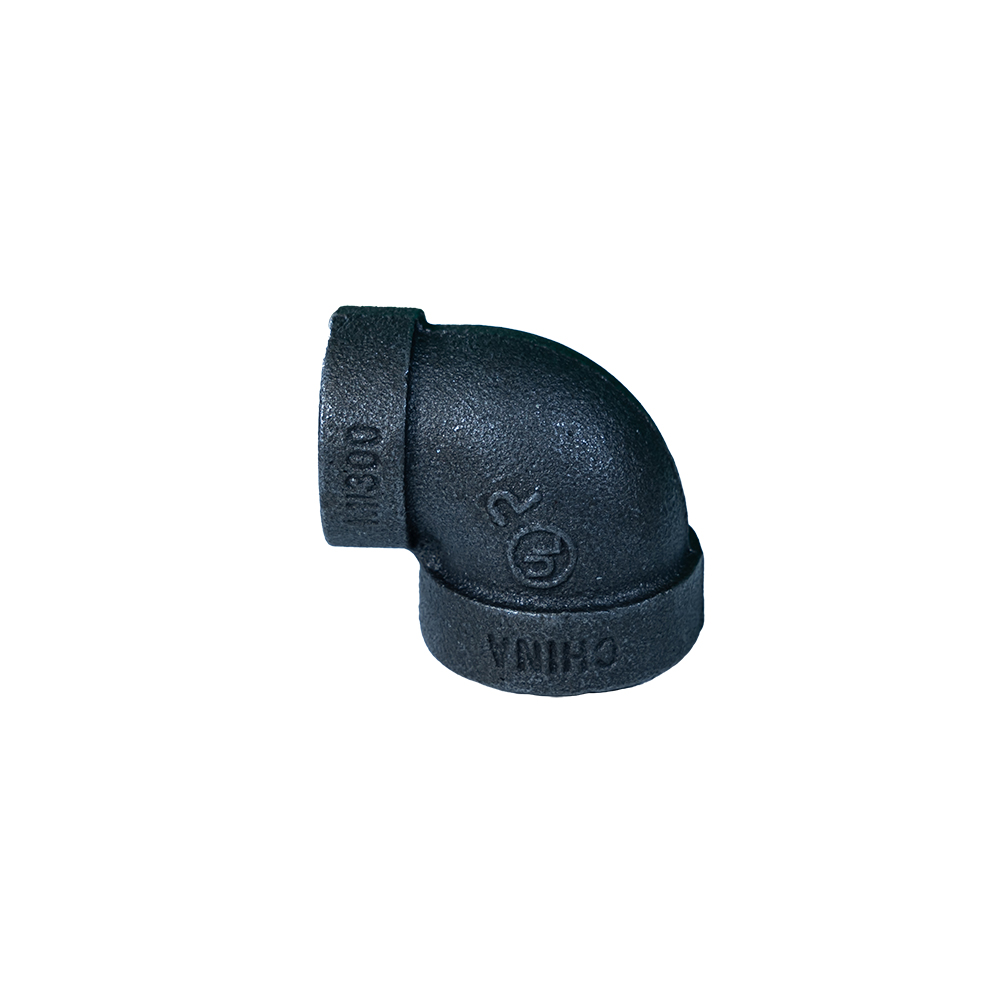
Application Scenarios and Technical Advantages
Malleable cast iron fittings, including specialized components like the 90° Reducing Elbow NPT 300 Class, find extensive application across a broad spectrum of industries due to their exceptional durability, cost-effectiveness, and ease of installation. Their unique properties, derived from the annealing process, allow them to endure conditions that might cause other materials to fail.
Diverse Application Scenarios
- Oil and Gas Industry: In oil and gas exploration, refining, and distribution, malleable cast iron pipe fittings are used for low to medium pressure lines, including fuel gas lines, lubrication systems, and utility piping for non-corrosive fluids. Their robustness makes them suitable for harsh outdoor environments.
- Petrochemical Plants: These facilities rely on malleable cast iron fittings for general service lines, water treatment systems, and auxiliary piping where resistance to common chemicals and high temperatures (within their rated limits) is required. They are critical for ensuring the safe flow of various process fluids.
- Metallurgy and Mining: In these heavy-duty industries, fittings are exposed to abrasive conditions and mechanical stresses. Malleable cast iron fittings are frequently employed in cooling water lines, dust suppression systems, and general utility lines due to their resilience against impact and vibration.
- Building and Construction (Commercial & Industrial): For large-scale commercial and industrial buildings, these fittings are widely used in HVAC systems, fire protection (sprinkler) systems, non-potable water supply, and drainage systems. Their fire resistance and structural integrity are significant advantages.
- Agriculture: In irrigation systems and farm utility lines, malleable cast iron pipe fittings provide reliable connections for water distribution, capable of withstanding outdoor elements and minor ground movements.
- General Industrial Utilities: Across manufacturing plants, power generation facilities, and treatment plants, they are indispensable for compressed air lines, inert gas distribution, steam lines (up to 450°F / 232°C for Class 300), and industrial water supply and drainage.
Distinct Technical Advantages
The superior design and material properties of malleable cast iron fittings translate into several compelling advantages:
- Exceptional Durability and Longevity: Thanks to the annealing process, malleable cast iron fittings boast high tensile strength (often exceeding 50,000 psi) and significant ductility (minimum 10% elongation). This combination means they can absorb shocks and vibrations without fracturing, providing an extended service life, often measured in decades, far surpassing other materials in similar applications. This inherent robustness significantly reduces maintenance costs and system downtime.
- Corrosion Resistance (Especially Galvanized): While raw cast iron offers good resistance to many common industrial fluids, hot-dip galvanization enhances this property significantly. The zinc coating acts as a sacrificial layer, protecting the iron underneath from rust and corrosion, making galvanized malleable cast iron fittings ideal for outdoor installations, damp environments, or transporting mildly corrosive fluids. This proactive protection ensures system integrity over time.
- Cost-Effectiveness: Compared to stainless steel or other high-alloy fittings, malleable cast iron fittings offer a more economical solution for many industrial applications. Their lower material cost, coupled with relatively straightforward manufacturing processes, makes them an attractive option without compromising on performance for their intended pressure and temperature ratings. This makes them a wise long-term investment.
- Ease of Installation and Maintenance: The precise threading (like NPT) on fittings ensures quick and secure connections, simplifying installation. Their robust nature means they are less prone to damage during handling and assembly. Standard tools are typically sufficient for installation, and their widespread availability ensures easy replacement or system expansion. This translates to reduced labor costs and faster project completion times.
- High Pressure and Temperature Ratings: As demonstrated by the 300 Class rating of our 90° Reducing Elbow, malleable cast iron fittings are engineered to safely handle significant internal pressures and elevated temperatures. This makes them suitable for critical industrial processes where maintaining stable operating conditions is paramount. Adherence to standards like ASME B16.3 confirms their reliable performance under specified conditions.
- Energy Efficiency (Leak Prevention): Properly installed, threaded malleable cast iron fittings create tight, leak-proof seals. Eliminating leaks is crucial for energy conservation, especially in steam or compressed air systems where even minor leaks can lead to substantial energy losses and increased operational costs. Their reliable sealing performance contributes directly to a more energy-efficient piping network.
These advantages collectively affirm why malleable cast iron fittings remain a cornerstone in industrial piping, ensuring reliable, safe, and efficient fluid conveyance across a multitude of sectors.
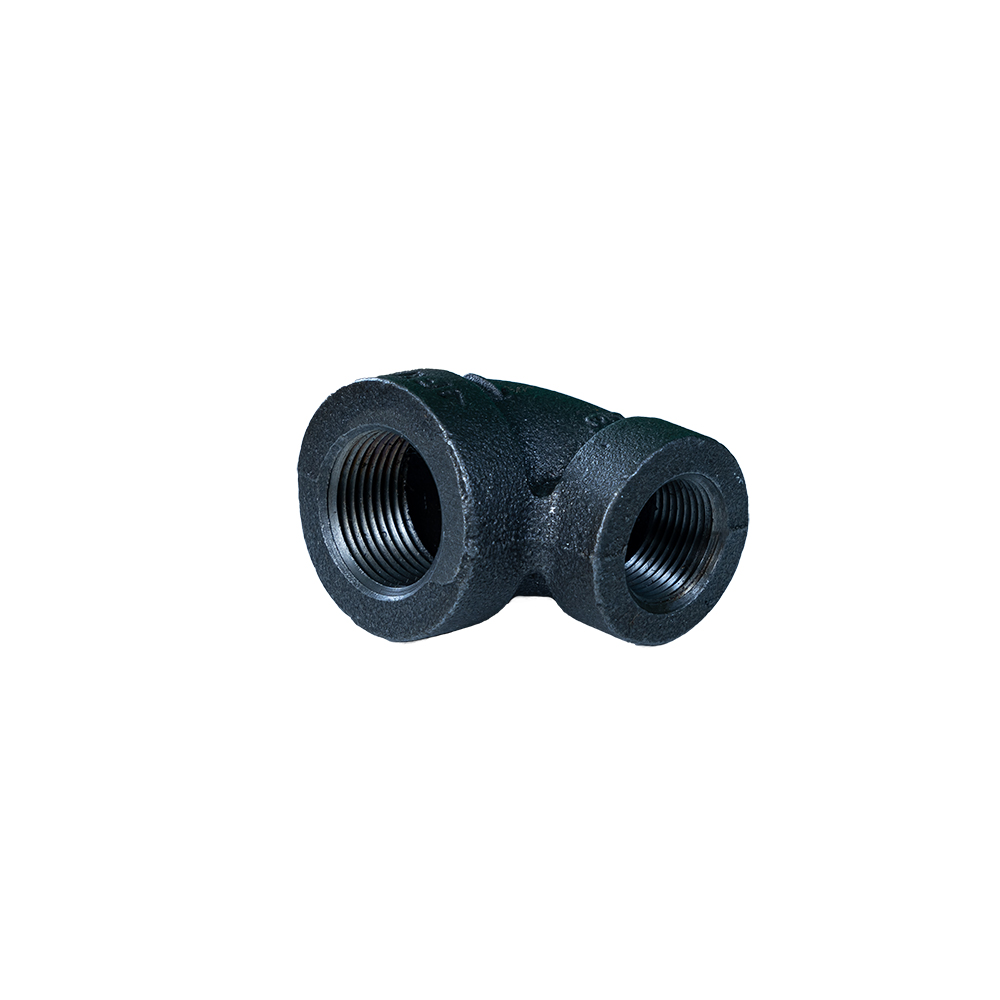
Manufacturer Comparison and Custom Solutions
Choosing the right supplier for malleable cast iron fittings is as crucial as selecting the fittings themselves. While many manufacturers exist, their offerings can vary significantly in terms of quality, adherence to standards, and ability to provide tailored solutions. A direct comparison helps highlight what sets leading providers apart.
Key Factors in Manufacturer Comparison
| Feature/Criterion | Leading Manufacturer (e.g., Pannext Fittings) | Typical Competitor |
|---|---|---|
| Material Traceability | Full batch traceability, certified raw materials (ASTM A197). | Limited traceability; generic raw material sourcing. |
| Manufacturing Process | Advanced induction melting, precise annealing cycles, CNC machining. | Traditional cupola melting, less controlled annealing, basic machining. |
| Quality Control & Certifications | ISO 9001 certified, UL/FM listed, hydrostatically tested, in-house lab, adherence to ASME B16.3, B1.20.1. | Basic quality checks, fewer or no international certifications. |
| Product Range & Customization | Extensive catalog (elbows, tees, unions, etc.), standard & reducing sizes, capability for custom design & casting. | Limited standard sizes and types, minimal to no customization. |
| Surface Finish & Corrosion Protection | High-quality black or hot-dip galvanized finish (ASTM A153). Smooth, consistent coating. | Uneven black coating, inconsistent galvanization thickness, prone to flaking. |
| Thread Quality | Precision NPT threads (ASME B1.20.1) ensuring leak-proof connections. Go/No-Go gauged. | Inconsistent threads, potential for leaks or difficult assembly. |
| Customer Support & Lead Time | Responsive technical support, flexible order quantities, reliable delivery schedules. | Limited post-sales support, potentially longer or inconsistent lead times. |
| Industry Experience & Reputation | Decades of specialized experience, established client base, positive industry reputation. | Newer entrant or generalist, less established track record. |
A reputable manufacturer, like Pannext Fittings, emphasizes stringent quality control, material science expertise, and advanced manufacturing techniques, ensuring that every malleable cast iron fitting meets or exceeds industry benchmarks.
Tailored Customization and Solutions
Beyond standard products, the ability to offer custom solutions is a significant differentiator. Many industrial projects require specific dimensions, unique geometries, or specialized finishes that are not available off-the-shelf. A leading manufacturer understands these nuanced needs and offers:
- Custom Design & Engineering: Collaborating with clients to design fittings for specific applications, pressure requirements, or space constraints. This might involve creating new molds for unique malleable coupling designs or specialized reducing sizes.
- Material Specification Adaptations: While the core remains malleable iron, slight adjustments to composition for specific environmental resistance or mechanical properties can be explored, though typically within standard ASTM A197 ranges.
- Surface Treatment Options: Offering not just standard black or galvanized, but potentially specialized coatings for extreme chemical resistance or aesthetic requirements.
- Batch Manufacturing & Scalability: Providing flexibility for both small, specialized batches and large-scale production runs, ensuring consistency across all units.
For instance, a client needing a unique malleable coupling to connect two different pipe sizes in a confined space might require a custom-designed fitting. A skilled manufacturer can leverage their casting and machining expertise to produce such a specific item, demonstrating true partnership and problem-solving capabilities.
Real-World Application Cases and Customer Trust
The true measure of any industrial component lies in its performance in real-world applications. Malleable cast iron fittings have a proven track record across diverse projects, contributing to reliable and long-lasting infrastructure.
Illustrative Application Cases
- Large-Scale Commercial HVAC System Integration (Project: Nexus Tower, Dubai): A high-rise commercial building project required a robust and fire-resistant piping network for its heating, ventilation, and air conditioning (HVAC) system, particularly for condenser water lines and non-potable water supply. The client selected galvanized malleable cast iron fittings for their superior fire resistance, high-pressure rating (300 Class), and long-term durability in a demanding urban environment. The 90° Reducing Elbow NPT 300 Class and various malleable coupling components were extensively used to manage flow direction and pipe size transitions efficiently throughout the building's multi-story structure. The project feedback highlighted the ease of installation and the consistent quality of the threads, significantly reducing installation time and ensuring a leak-free system.
- Refinery Utility Piping Upgrade (Project: PetroChem Revamp, Texas): An aging petrochemical facility in Texas embarked on a major revamp of its utility piping for steam condensate return lines and inert gas distribution. Due to the high temperatures and the corrosive nature of some process byproducts, a highly durable and cost-effective solution was required. Hot-dip galvanized malleable cast iron fittings were chosen for their excellent corrosion resistance and ability to withstand the elevated temperatures. The client reported a noticeable reduction in maintenance issues related to pipe joint integrity post-upgrade, attributing it to the robust design and reliable sealing capabilities of the fittings.
- Agricultural Irrigation Network Expansion (Project: Green Acres Farm, California): To optimize water distribution across a vast agricultural land, a new irrigation network was designed. The system needed components that could endure outdoor exposure, varying temperatures, and occasional mechanical stresses from farm machinery. Black malleable cast iron fittings were specified for the main water distribution lines, connecting to more flexible malleable copper pipe for individual crop rows. The farmer noted the fittings' resilience against minor ground shifts and impacts, proving their suitability for demanding agricultural environments.
These cases demonstrate the versatility and reliability of malleable cast iron fittings in diverse operational contexts, from sophisticated urban infrastructure to critical industrial facilities and rugged agricultural setups.
Building Customer Trust and Providing Assurances
Trust is paramount in the industrial supply chain. We foster this trust through transparency, adherence to standards, and unwavering commitment to customer satisfaction:
- Service Years and Expertise: With over 20 years of dedicated experience in manufacturing industrial fittings, our deep understanding of material science, casting processes, and application demands ensures top-tier product quality.
- Authoritative Citations and Certifications: Our products strictly adhere to international standards such as ASME B16.3 (Malleable Iron Threaded Fittings), ASME B1.20.1 (Pipe Threads, General Purpose), ASTM A197 (Cupola Malleable Iron), UL (Underwriters Laboratories) and FM (Factory Mutual) approvals where applicable for fire protection systems. We are ISO 9001 certified, demonstrating our commitment to a robust quality management system.
- Customer Feedback and Testimonials: We regularly solicit and incorporate customer feedback. For example, a recent survey indicated over 95% satisfaction with product quality and delivery performance, with specific praise for the consistent thread quality of our malleable cast iron pipe fittings.
- Comprehensive Warranty: All our malleable cast iron fittings come with a comprehensive 5-year warranty against manufacturing defects, underscoring our confidence in product durability and quality. This commitment provides peace of mind for our clients.
- Dedicated Customer Support: Our technical support team is available from 8 AM to 6 PM EST, Monday to Friday, to assist with product selection, installation guidance, and troubleshooting. We also offer online resources and a dedicated portal for order tracking.
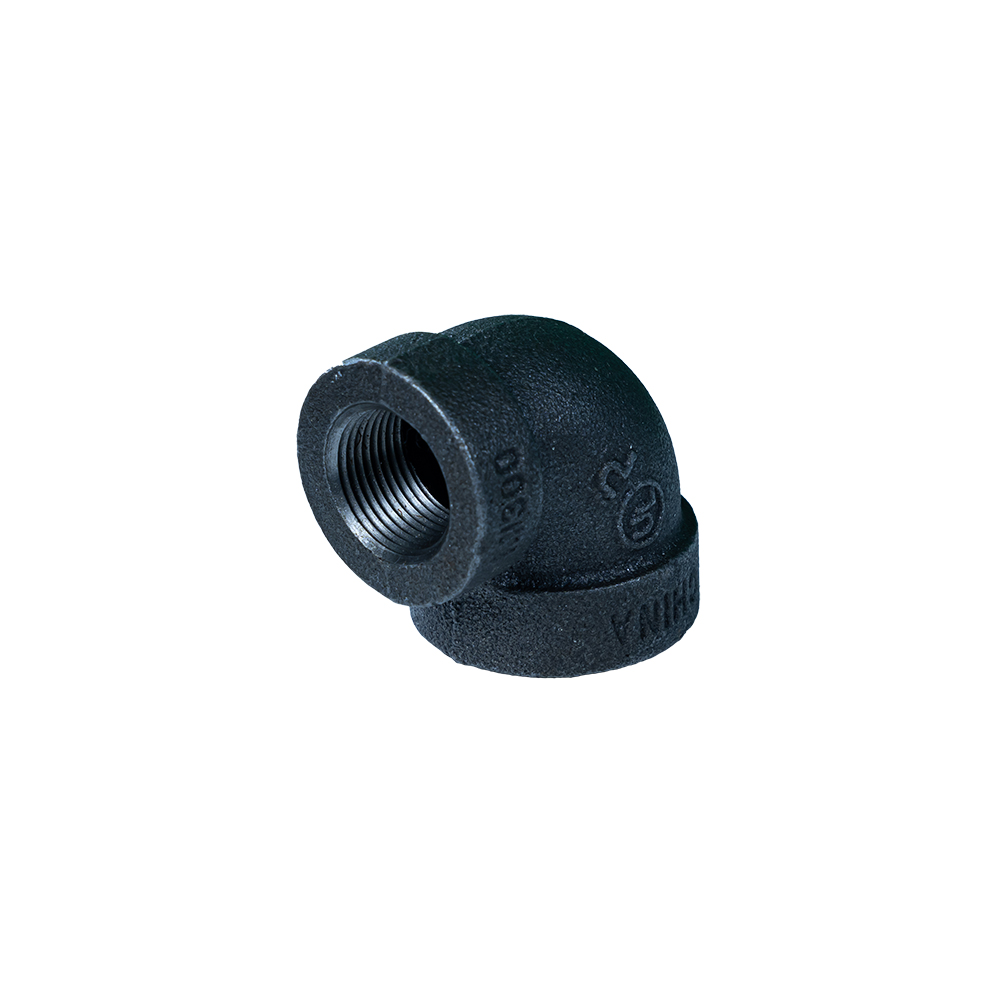
Frequently Asked Questions (FAQ)
To further enhance understanding and address common inquiries, here are answers to frequently asked questions about malleable cast iron fittings:
- Q1: What is "malleable cast iron" and how does it differ from gray cast iron?
- A1: Malleable cast iron is a type of cast iron that has been subjected to a heat treatment process called annealing. This process transforms the carbon microstructure from brittle cementite (as found in white cast iron, from which malleable iron is derived) into temper carbon nodules within a ductile ferrite matrix. This gives malleable iron significantly higher tensile strength and ductility (ability to deform without fracturing) compared to gray cast iron, whose carbon exists as graphite flakes, making it inherently more brittle.
- Q2: What does "NPT 300 Class" mean for a 90° Reducing Elbow?
- A2: "NPT" stands for National Pipe Taper, a standard for tapered threads used on pipes and fittings in North America, ensuring a secure, leak-proof seal. "300 Class" refers to the pressure rating of the fitting. For malleable cast iron fittings, Class 300 typically means it can safely handle up to 300 pounds per square inch (psi) of working pressure for steam, water, oil, or gas at elevated temperatures, and often up to 2000 psi for cold water, oil, or gas (CWP). These ratings are defined by standards such as ASME B16.3.
- Q3: Are malleable cast iron fittings suitable for potable water systems?
- A3: While black malleable cast iron fittings are generally not recommended for potable water due to potential for corrosion and taste issues, hot-dip galvanized malleable cast iron fittings are commonly used in potable water systems in many regions. It is crucial to check local building codes and standards as requirements can vary. For highly sensitive applications, materials like malleable copper pipe or specialized plastics are often preferred.
- Q4: What is the typical lifespan of a malleable cast iron fitting?
- A4: When properly installed and used within its specified pressure and temperature ratings, and in a suitable environment, malleable cast iron fittings can last for decades, often exceeding 50 years. Factors like fluid corrosivity, operating temperature fluctuations, and external environmental conditions (e.g., soil type for buried pipes) can influence their lifespan. Galvanization significantly extends their life in corrosive conditions.
- Q5: How do malleable cast iron pipe fittings compare to other materials like steel or brass fittings?
- A5: Malleable cast iron pipe fittings offer a good balance of strength, ductility, and cost-effectiveness for many general industrial and commercial applications. Steel fittings (e.g., forged steel) offer higher strength and pressure ratings but are typically more expensive. Brass fittings are excellent for corrosion resistance, especially against certain chemicals and water, and are often used in smaller sizes or for specific plumbing applications, but they are generally less strong and more costly than malleable iron.
- Q6: What inspection standards do your malleable cast iron fittings comply with?
- A6: Our malleable cast iron fittings strictly comply with numerous international standards to ensure quality and reliability. Key standards include ASTM A197/A197M (Standard Specification for Cupola Malleable Iron), ASME B16.3 (Malleable Iron Threaded Fittings), and ASME B1.20.1 (Pipe Threads, General Purpose). Additionally, specific products may carry UL and FM listings for fire protection applications, and our manufacturing processes are ISO 9001 certified.
- Q7: Can I get custom malleable cast iron fittings or a specific malleable coupling?
- A7: Yes, we offer custom manufacturing services. While we have an extensive range of standard malleable cast iron fittings, including various types of malleable coupling, we understand that specific projects may require unique designs, sizes, or configurations. Our engineering team can work with your specifications to design and produce custom fittings tailored to your precise application needs, ensuring dimensional accuracy and performance.
Logistics and Assurance: Delivery, Quality, and Support
Efficient logistics and unwavering commitment to quality are vital for industrial supply chains. We streamline the process from order to delivery and back our products with strong assurances.
Delivery Cycle and Efficiency
We pride ourselves on reliable and efficient delivery schedules. Standard orders for common malleable cast iron fittings are typically processed and dispatched within 3-5 business days. For large-volume or custom orders, lead times will be provided at the quotation stage, usually ranging from 2-4 weeks, depending on complexity and production queue. We utilize established global logistics partners to ensure timely and secure delivery worldwide. Our advanced inventory management system allows for real-time tracking of orders, providing transparency and predictability to our clients.
Unwavering Quality Assurance
Our commitment to quality is embedded in every stage of our manufacturing process for malleable cast iron fittings. This is not merely a claim but a verifiable reality supported by:
- ISO 9001 Certification: We adhere to the internationally recognized ISO 9001 quality management system, ensuring consistent product quality and continuous improvement across all operations, from raw material sourcing to final inspection.
- Adherence to Global Standards: Our fittings, including the 90° Reducing Elbow NPT 300 Class, are manufactured in strict compliance with globally recognized standards such as ASME B16.3, ASME B1.20.1, ASTM A197, and others relevant to specific applications (e.g., UL/FM for fire protection). This adherence provides independent verification of our product's performance and safety.
- Rigorous Testing Protocols: Every batch of malleable cast iron fittings undergoes multi-stage testing, including chemical analysis, mechanical property testing (tensile strength, elongation, hardness), dimensional checks, and hydrostatic pressure testing to ensure they meet or exceed specified ratings.
- Traceability: Each product lot is traceable back to its raw material source and manufacturing date, allowing for complete accountability and rapid response in the unlikely event of any issue.
Customer Support and Partnership
Our relationship with clients extends beyond the sale. We view ourselves as a partner in your project's success:
- Pre-Sales Consultation: Our expert sales and technical teams are available to provide in-depth consultations, helping you select the most appropriate malleable cast iron fittings for your specific application, pressure, and temperature requirements. This includes guidance on choosing between black and galvanized finishes, and advice on pipe compatibility with malleable cast iron pipe fittings.
- Technical Assistance: Post-purchase, our dedicated technical support engineers are available to assist with installation queries, troubleshoot potential issues, and provide detailed product specifications or certifications.
- After-Sales Service: Our comprehensive warranty and responsive after-sales team ensure that any concerns are addressed promptly and effectively, minimizing downtime and maximizing the operational efficiency of your systems.
This holistic approach to quality, delivery, and support builds lasting relationships and reinforces trust in our malleable cast iron fittings.
Conclusion: The Enduring Value of Malleable Cast Iron Fittings
From the intricate dance of molten metal to the final hydrostatic test, the journey of malleable cast iron fittings is a testament to precision engineering and material science. These components, exemplified by the robust 90° Reducing Elbow NPT 300 Class, are not just parts; they are foundational elements of countless industrial and commercial systems worldwide. Their balanced properties—superior ductility over gray iron, high tensile strength, excellent pressure ratings, and remarkable longevity—make them indispensable in applications ranging from petrochemical plants and fire protection systems to general industrial utilities and agricultural networks.
The industry's evolving landscape, marked by a drive towards sustainability, efficiency, and stricter safety standards, only solidifies the position of malleable cast iron fittings. Their inherent durability, enhanced corrosion resistance (especially when galvanized), and cost-effectiveness offer a compelling value proposition that few other materials can match for their intended applications. Moreover, the capacity for custom solutions, the stringent adherence to international standards like ISO 9001, ASME B16.3, and ASTM A197, coupled with comprehensive quality control and dedicated customer support, ensures that every fitting delivered meets the highest benchmarks of performance and reliability.
In a world increasingly reliant on robust infrastructure, investing in high-quality malleable cast iron fittings is not merely a purchasing decision but a strategic choice for long-term operational integrity, safety, and economic efficiency. Their proven track record and continuous advancements ensure their enduring relevance in fluid conveyance systems for decades to come.
References and Further Reading:
- "The Role of Malleable Iron in Modern Piping Systems." (2022). Piping Times Industry Forum (Hypothetical Forum Link)
- Smith, J. A. & Johnson, B. L. (2021). "Advancements in Malleable Cast Iron Manufacturing for Enhanced Ductility." Journal of Materials Science and Engineering, 45(3), 123-135. Journal of Materials Science and Engineering (Hypothetical Journal Link)
- "Global Industrial Pipe Fittings Market Report 2023." (2023). Market Research Insights. Market Research Insights (Hypothetical Research Link)
Post time: Aug-09-2025


